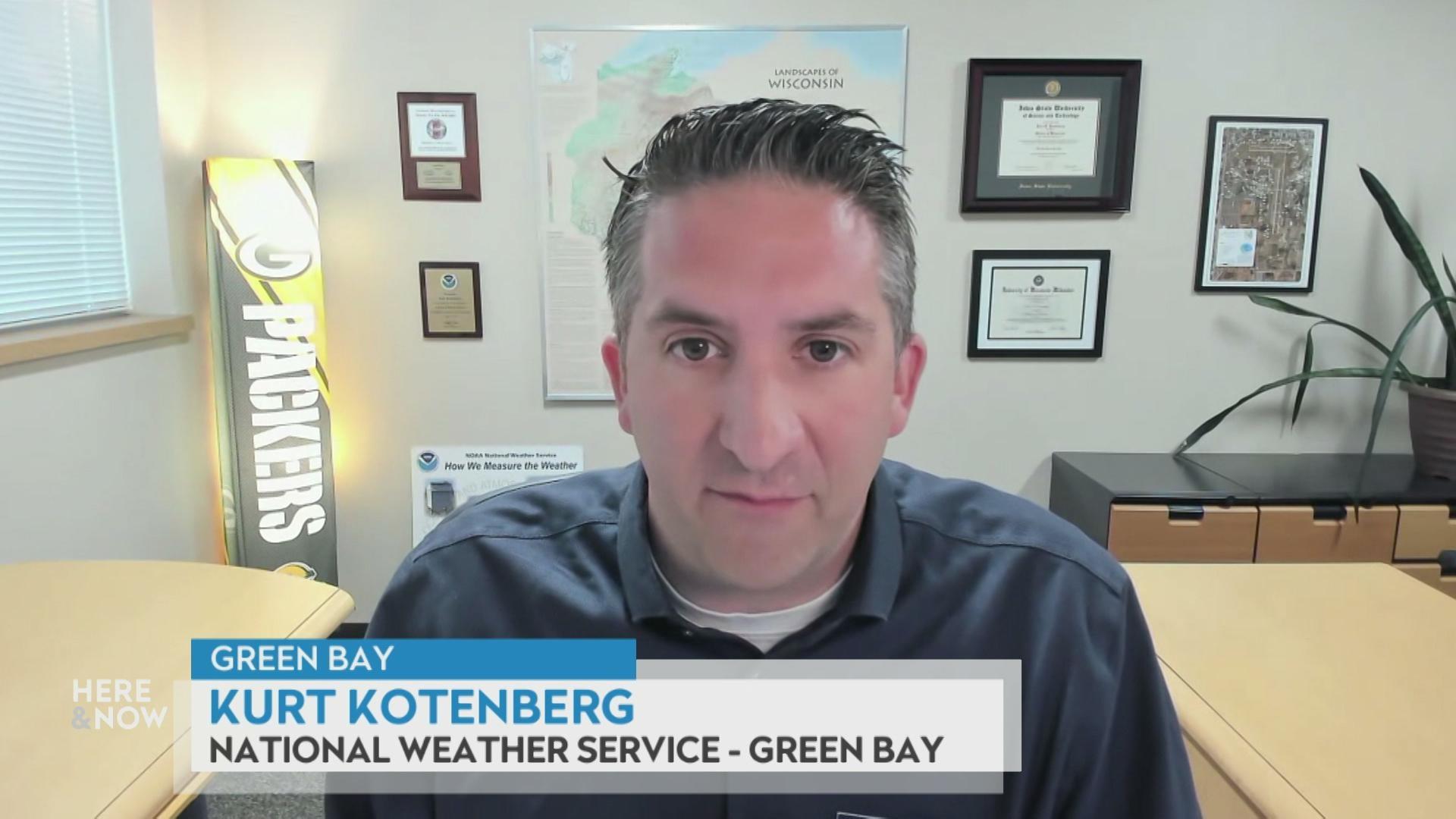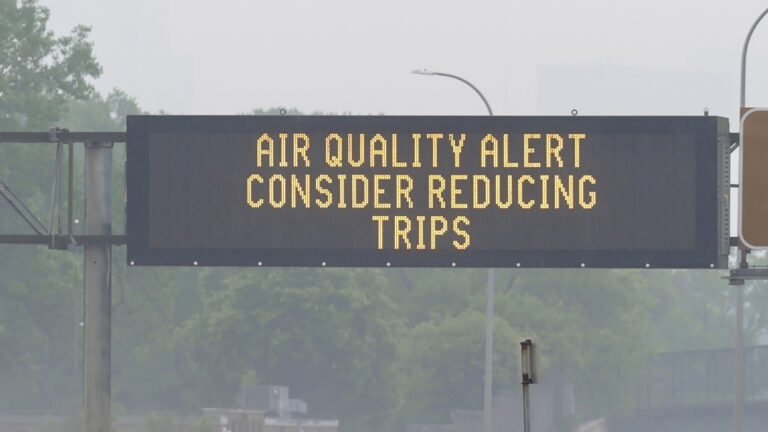Divisions over wolves shape Wisconsin's new management plan
Indigenous communities, farmers, hunters and Wisconsinites of all stripes express strong feelings about wolves as their numbers grow in the state and a new management plan for the species is unveiled.
By Nathan Denzin | Here & Now
March 1, 2024 • Northern Region
“I’m here today to talk about my brother, and my brother is the ma’iingan,” said Marvin DeFoe.
“The more you put wolves in close contact, in proximity with people, the greater the chances are of something truly catastrophic happening,” said Brad Olson.
“Wolves should be allowed to reestablish their historic range,” said Ron Nordin, Jr.
“They’re going to allow an unchecked, unmanaged wolf population to continue to wreak havoc,” said Keith Mark.
Bring up wolves to a Wisconsinite, and you’ll likely get a passionate response.
“It’s probably been the longest, most intense public engagement process that I’ve been a part of,” said Sam Jonas, the wildlife species section supervisor with the Wisconsin Department of Natural Resources. He helped write Wisconsin’s newest wolf management plan, which was approved in late 2023.
“It strives for a sustainable and healthy wolf population,” he said.
Gray wolves (Canis lupus) are federally protected as an endangered species. But if that designation was ever lifted, Wisconsin would be required by law to hold a wolf hunt like it did in 2021.
The DNR received over 3,500 public comments while developing the plan with a group of 29 stakeholders.
One of those stakeholders: the Red Cliff Band of Lake Superior Chippewa in northern Wisconsin.
“The ma’iingan goes back in our history and our story, our existence, who we are as Anishinaabe, said Shingbinase, or Marvin DeFoe, who is a spiritual leader in Red Cliff.
In Ojibwe, or Anishinaabemowin, ma’iingan means wolf.
“We know the ma’iingan as our brother,” said DeFoe.
He said the relationship between wolves and Ojibwe people goes back over thousands of years.
“There’s a lot of misconceptions out there about the ma’iingan,” DeFoe added. “A loving being that has a heart, that has a soul.”
“Wolves are really important to Native people of Wisconsin because it’s said that what happens to one of us will happen to the other,” said Nordin, Jr., who is the wildlife technician for the Red Cliff tribal government.
“It’s the tribe’s objective to protect wolves. They’re a keystone species. They create biodiversity. They’re excellent for the habitat — we’re seeing better forest regeneration,” he explained.
“They have a great role to play, not just with deer, but with lots and lots of other animals out in the woods,” said Genevieve Adamski, who works with Nordin, Jr. as the wildlife specialist for the Red Cliff tribal government.
“Wolves will, in general, regulate themselves. They have pack boundaries. They can’t just exponentially grow,” she explained.
The wolf population in Wisconsin has grown, but not exponentially. They numbered about 250 in 2001, and were roughly 1,000 as of an annual count completed in April 2023.
That growth has caused plenty of conflict.
“It has become a real issue for agriculture and especially, of course, livestock agriculture,” said Brad Olson, the president of the Wisconsin Farm Bureau Federation. They were also involved with the 2023 management plan.
Olson said wolves are a big concern for farmers in the northern half of the state.
“One case in central Wisconsin, they came in in a night and wiped out the entire herd of sheep — that’s years and years of work by that individual farmer,” he said. “It’s the emotional stress of something like that, losing everything in one night due to a predator.”
The DNR paid out over $100,000 for domestic animals killed by wolves in 2022. But Olson said it’s about more than money.
“It isn’t a financial loss at that point. It’s an emotional loss at that point,” he said. “It’s something that I’m sure money just can’t fix.”
Olson said he and his organization aren’t opposed to having wolves in the state.
“I don’t think anybody is out to get rid of the wolves,” he said.
But Olson thinks the 2023 management plan has flaws.
“I mean, it’s a bad plan,” he said.
The Farm Bureau sent a letter to the DNR opposing the new plan in October. A key point of contention is the number of wolves recommended for a healthy habitat.
The old guidelines recommended a population of 350 wolves for the whole state before other management practices, like a hunt, were implemented. Now, there is no specific number named before those management plans would be considered.
“Once you get past that 350 goal, that was back in the late ’90s in the original wolf plan that had scientific data to it. This plan really has no scientific data,” said Olson.
But DNR wildlife supervisor Jonas said that number was misunderstood, and needed to be updated.
“It was never intended to be a cap per se,” he said. “It was really a management objective or number to consider other management tools.”
Jonas said the new guidance doesn’t set a hard limit on a statewide number of wolves because it wants to be more responsive to local communities.
“We’re also going to be balancing that with what does depredation look like, what the conflicts look like within each zone. What is the community saying for the wolf population where they live?” he explained.
“Let’s say we do set a goal number. That’s going to change from year to year based on not only climate data, but where the people are distributed and just all these different factors,” Adamski said.
Not everyone sees it that way.
“If you look at deer harvest over the years, compared to wolf populations over the years, there is a direct correlation between the two,” said Keith Mark, the president of Hunter Nation, a national organization for hunters. Hunter Nation did not participate in the 2023 management plan, though multiple in-state hunting organizations did.
Hunter Nation sued the state of Wisconsin in 2021 to schedule another wolf hunt while gray wolves were briefly delisted.
“Surely they want to see a sustainable population of deer,” said Mark.
Wisconsin’s annual deer hunt harvests have fallen since its peak in 2000, from well over half a million to about 350,000 in 2022.
Northern counties, like Bayfield, have seen a particularly sharp decline. Deer hunt totals in 2022 were only a fraction of what they were two decades ago.
“You’re going to end up with so few deer that there won’t be a hunting season,” Mark said.
“In my part of the state, you can sit out there for hours on end on opening day of deer season and not hear anything, not hear a shot,” said Olson.
But others aren’t as sure wolves are solely to blame for the north woods’ declining deer population.
“If you were around here last winter — 157 inches of snow, huge amounts of snow — you know, that’s going to kill some deer,” DeFoe said.
“When there’s less deer, what are the wolves going to eat?” asked Adamski.
“It’s really the deer population that regulates the wolf population,” Nordin, Jr. added.
DNR records show the past five years of deer harvests in Bayfield county have been larger than harvests between 1967 and 1978. That was before the first reintroduced wolf pack wandered into Douglas County.
If the gray wolf ever was taken off the endangered list, the 2023 management plan lays out a system for experts to decide local harvest goals.
“We want to be able to incorporate local input, local feedback as to how they feel. Wolf populations are in their community,” Jonas said.
“What is the science saying? But that’s not the only thing we’re going to be looking at. And that’s going to help us be flexible and adaptable to what wolves are telling us,” he added.
In the meantime, everyone agrees there is common ground to be found.
“We need to work together. We need to be vigilant and sit down and listen to each other,” said Nordin, Jr.
“They are a majestic animal. And I don’t think — no one is advocating for their demise again,” Olson said.
“We really have to come together and have a really meaningful conversation,” said DeFoe “A mutual respectful conversation of what’s going on with the Earth.”
Editors note: This article is updated to indicate the Wisconsin Department of Natural Resources paid over $100,000 for domestic animals killed by wolves in 2022.
 Passport
Passport











Follow Us